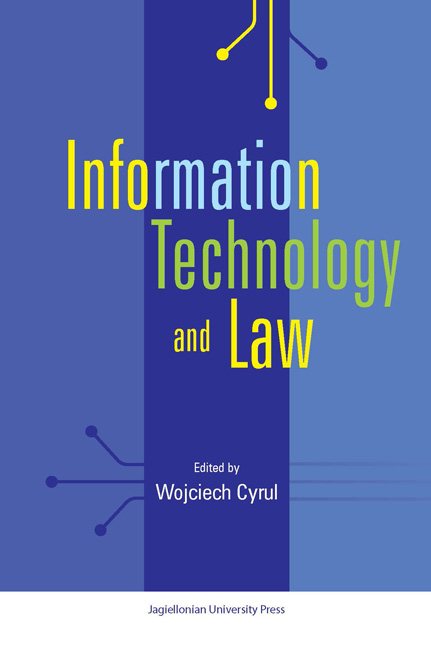Book contents
- Frontmatter
- CONTENTS
- Preface
- Chapter 1 Technological Destabilization of Law
- Chapter 2 Problems with the Storing and Presentation of Information
- Chapter 3 XML Models for Legal Documents: Current Polish Practices and International Standards
- Chapter 4 Similarity Analysis of Polish Legal Documents Using WordNets Semantic Relations
- Chapter 5 Consolidation of Legal Documents in an Electronic Format
- Chapter 6 A Three Dimensional – Code and a Question of the Normative Hyper-linking?
- Chapter 7 The Law, Labour Unions and Information Technology: Enhancing or Restricting Democracy at the Workplace
- Chapter 8 Protection of the Consumer in Digital Content Contracts
- Chapter 9 Procedure, Time and Imputation in Criminal Law
Chapter 5 - Consolidation of Legal Documents in an Electronic Format
Published online by Cambridge University Press: 05 December 2014
- Frontmatter
- CONTENTS
- Preface
- Chapter 1 Technological Destabilization of Law
- Chapter 2 Problems with the Storing and Presentation of Information
- Chapter 3 XML Models for Legal Documents: Current Polish Practices and International Standards
- Chapter 4 Similarity Analysis of Polish Legal Documents Using WordNets Semantic Relations
- Chapter 5 Consolidation of Legal Documents in an Electronic Format
- Chapter 6 A Three Dimensional – Code and a Question of the Normative Hyper-linking?
- Chapter 7 The Law, Labour Unions and Information Technology: Enhancing or Restricting Democracy at the Workplace
- Chapter 8 Protection of the Consumer in Digital Content Contracts
- Chapter 9 Procedure, Time and Imputation in Criminal Law
Summary
1. Introduction
Communication shapes legal practices and therefore the implementation into them information and communication technologies (ICT) influences also the way in which law is drafted and promulgated. It leads not only to automation of search and analysis of legal documents, but it opens up as well new ways to manage, visualize and share legal information, and gives new possibilities of work flow control during the legislative process.
Although the implementation of ICT into the legislative process increases its effectiveness, it makes it also dependant on the technological standards used by legislators and their interoperability. Moreover, it entails adjustment of legislative practices to both the requirements and the potential of the new technologies. This is because the informatization of the legislative process involves the development of new tools, which are necessary for making and publishing legal documents in an electronic format, i.e. dedicated editors to tag the texts of legal acts in XML, converters enabling conversion of documents stored in one format to another format, XML Databases to store tagged documents, to manage and verify various versions of legal documents, work flow management platforms for legislative or parliamentary activities and URI/Link resolvers for connection to resources of various lawmaking authorizes.
One of the major changes resulting from the developments and implementation of ICT into legislative processes is the appearance of new ways in which legal documents can be promulgated and consolidated.
- Type
- Chapter
- Information
- Information Technology and Law , pp. 79 - 94Publisher: Jagiellonian University PressPrint publication year: 2014



